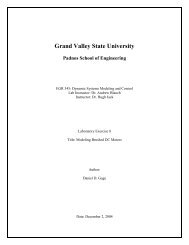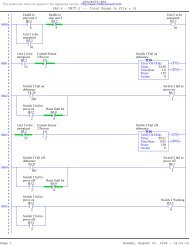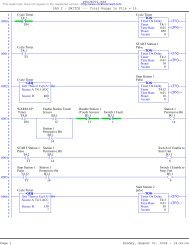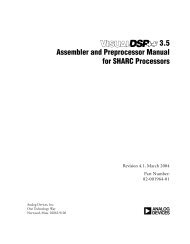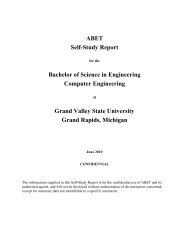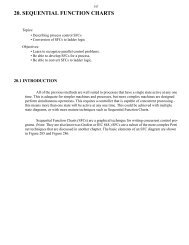Final Report - Claymore - Grand Valley State University
Final Report - Claymore - Grand Valley State University
Final Report - Claymore - Grand Valley State University
Create successful ePaper yourself
Turn your PDF publications into a flip-book with our unique Google optimized e-Paper software.
Executive Summary<br />
The objective of this design project was to develop a device to read a signal,<br />
locate a target, and fire a practice golf ball through the target autonomously in the least<br />
amount of time possible. An ATMega32 microcontroller and L298P H-bridge driver<br />
were used to control the device. Cost, weight, and size constraints were put under<br />
consideration.<br />
A stationary device with a rotating turret and launch mechanism was the optimal<br />
design choice upon consideration of the design parameters. The launch mechanism was a<br />
directed air nozzle contained within a 9 inch by 1.5 I.D. low-pressure PVC pipe. The<br />
positioning of the launch mechanism was controlled by a high-torque stepper motor. The<br />
stepper motor was fastened to an aluminum coupler, which was fastened to the launching<br />
mechanism. The balls were fed to the launching mechanism using a gravity fed, helical<br />
track wire hopper. The ATMega32 microcontroller was utilized to receive 5V inputs<br />
from an external source. When a signal was received, the stepper motor aligned the<br />
barrel with one of four targets and launched a practice golf to disable the target.<br />
Testing was executed to determine how the device would perform in the final<br />
competition. The test results revealed that air provided an adequate force to shoot the<br />
balls at the targets. Furthermore, the stepper motor provided accurate positioning of the<br />
barrel at an acceptable rate.<br />
1



